Questionhi michelle,
im in the process of adopting a 3yr old husky female from my local dogs rescue, and have a few questions about them as every site ive looked at just doesnt have the information i need. id be sooo greatful if you could help me out. as i want to give her the best start with us, she appears to be a very sweet natured lass.
the rescue center have told me she is very nervous, and needs to be introduced to people very slowly. which i am fine about, but in your opinion what would be the best way to do this??
secondly, with her being 3yrs old and very set in her ways by now, what is the best type of food to give her? i've been informed she is slightly under weight.
Do huskys have any KNOWN medical problems i should be well aware of? she has bright blue eyes, are huskys known to have eye problems? such as blindeness? etc..
the center also informed me that huskys are very active dogs and great escape artists, the active side of it i dont mind as my boyfriend (who lives with me) is very active him self, and i myself am in the police force so sports are second nature to me, but what is troubling me is, she was brought up on a farm and has never been properly trained, she doesnt return on command and hasn't be taught the usual sit,stay & paw commands, is there any easy to follow ways to train her up? as i live in the middle of alot of fields i dont want her to run off and me not be able to find her, as there is also a very busy main road through the middle of where i live.
im sorry the question was so long, but i really want to give my husky (named tequilla) a good second chance in life.
please reply to my email address if possible.
many thanks michelle
AnswerSounds like you are giving her a good second chance by doing some research.
A three year old rescue who is nervous around people is going to be tough to deal with in some ways. If is just a bad experience earlier in life, you may be able to get her through it by working her slowly and encouraging interaction (strangers with treats often is a good start). If it is complete lack of socialization during developmental periods in a puppy - it actually is next to impossible to get her to properly adjust to wide social settings. My guess though is it was probably just poor socialization or a bad experience, not complete isolation. In that case, not encouraging the skittish behavior, making people encounters friendly, and desensitizing her to large groups is good. You don't want to coddle her if she shows fear or is jumpy, instead, you are confident and simply ignore her reactions. Most dogs will then learn to follow their owner's example and adjust. Start slowly with large groups, maybe taking her to a park and staying on the outskirts of groups of people. Next time you go, you get closer, more involved, etc. And as for individual people - like I said, treats are a good start. As for you and your boyfriend, bringing the dog into the home and giving her a good two weeks or so to get used to her surroundings and you feeding her, etc. will help a lot in trust.
Best type of food is personal preference, but I would suggest a "super premium" kibble with high protein and high fat contents . . . somewhere around 25% on both on the crude analysis listed on the package. Also, try to find a food that starts with a meat base, and if you can find one that starts with a meat as opposed to a meat "meal" that's even better (chicken versus chicken meal). Keep in mind that grains are basically non-nutritional fillers for dogs, as is corn, so while they are in kibble, you don't want that to be the main ingredient. You may want to look for puppy food actually, they usually have higher fat and protein contents. Supplementing food with a little bit of meat as well is good - we use hamburger all the time. Also, Siberians have extremely efficient metabolisms usually, so you probably don't need to feed as much as the bag says, but keep an eye on how much she eats, her stool consistency (loose stools = too much food), and of course her weight.
As for medical problems, Siberians have benefited from staying off the "most popular breed" list and have maintained strong working lines into recent years. What this means is that hip and eye issues, while still possible in the breed, are much less common than in many other dogs. A well bred dog should have hips checked for CHD and eyes for PRA. Beyond those two issues, Sibes are usually very healthy; even those two issues are not all the common. Canine Hip Dysplasia and Progressive Retinal Atrophy occur in almost all pure-bred dog lines, but Siberians have a lower incidence rate of either of them then most other dogs. (I saw once a stat on Sibes being ranked 67 of 72 in dogs "susceptible to CHD" with an occurrence rate of less than 1% . . . whereas the number 1 on that list was something like 15-20%.) So they are pretty healthy dogs - oh and blue eyes, while a potential sign of blindness in most dogs, is perfectly acceptable in Siberians who don't have problems with it. Sibes are one of a handful of breeds (Australian Shepherds being another I believe) that are allowed to have blue eyes by their standard because it presents little to no medical problem.
Training could be a very long response, but I will say this - find a trainer that is use to working with high drive dogs. Actually, as a police officer, you might have some great access to training or advice if you have a K-9 unit. While much different than training a German Shepherd or something, Sibes are high drive dogs much like "police" dogs. One thing that you cannot train (reliably) a Siberian to do . . . be off-leash. Unfortunately, their prey drive and desire (as well as ability) to run makes them unreliable at best off lead. Add to this that they were bred to be disobedient, and recall with a Siberian is extremely difficult. Living on a farm, she might have some idea of territory, but these dogs lack a homing instinct, a protective territorial instinct, and love to run. What this means is that given the chance, a 20 mile run is a good fun time. At the end, the Siberian will probably have little to no clue where to go to get "home."
If you have some questions on actual training techniques, let me know, but I didn't want to overwhelm you with too much info. Also . . .I'm not sure how long AllExperts allows the responses to be . . . :) Write back anytime.

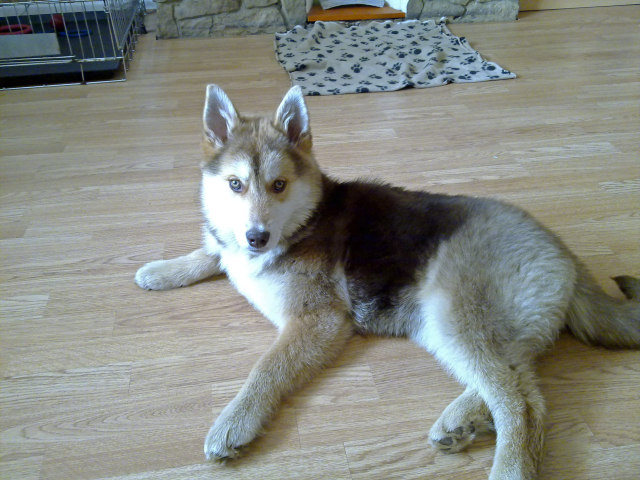 my husky colour
Question
mecca
hi i have recently got my husky mecca. s
my husky colour
Question
mecca
hi i have recently got my husky mecca. s
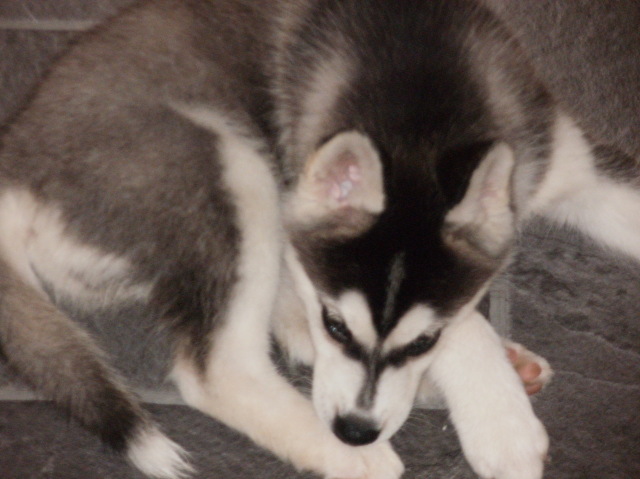 Bath Time
Question
Keiko
Hi we have a 14 week old Siberian named
Bath Time
Question
Keiko
Hi we have a 14 week old Siberian named
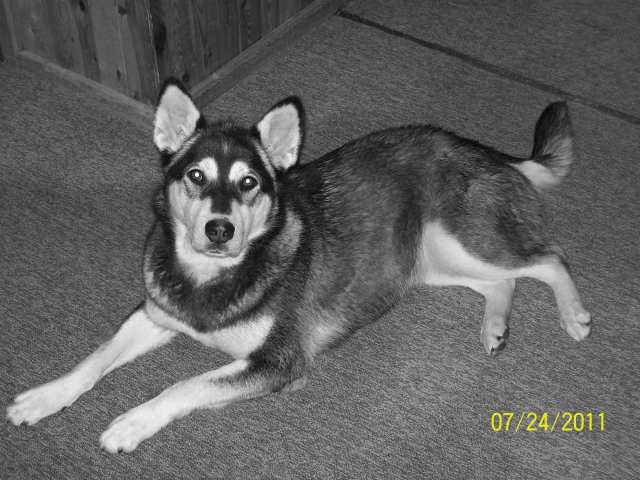 Pregnancy
Question
Diamond in black and w
Is it possible f
Pregnancy
Question
Diamond in black and w
Is it possible f
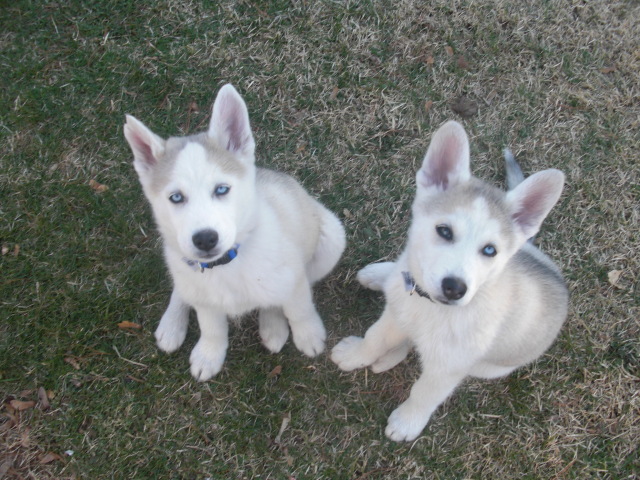 2 12 week old Husky brothers play/fighting
QuestionJasper & Sigmund
QUESTION: Two weeks
2 12 week old Husky brothers play/fighting
QuestionJasper & Sigmund
QUESTION: Two weeks
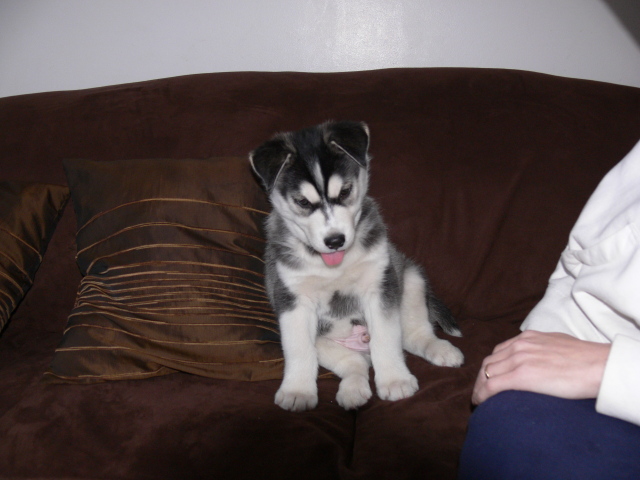 Husky Puppy Weight
Question
Zeus The Puppy
Hi we got Zeus at 6 1/2 weeks o
Husky Puppy Weight
Question
Zeus The Puppy
Hi we got Zeus at 6 1/2 weeks o